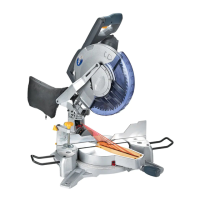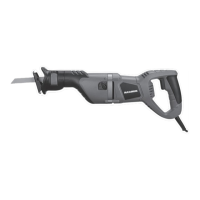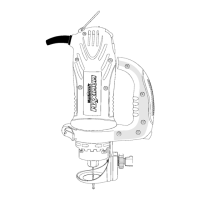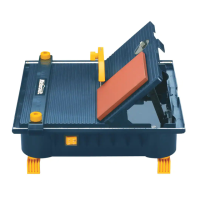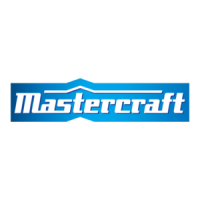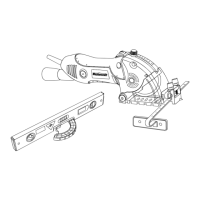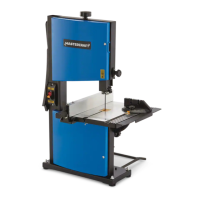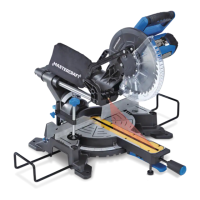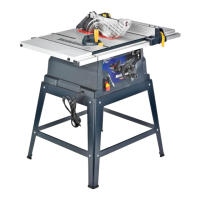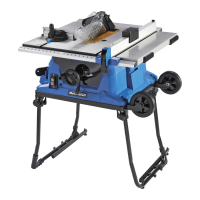19
TM
GLOSSARY OF TERMS
TM
POSITIVE STOP LOCKING LEVER – Locks the mitre saw at a preset positive stop for
the desired mitre angle.
SWITCH HANDLE – The switch handle contains the trigger switch and safety lock-off
button. The blade is lowered into the workpiece by pushing down on the handle. The
saw will return to its upright position when the handle is released.
WARNING LABELS – Read and understand for your own safety. Make sure all labels are
present on machine and legible.
WRENCH STORAGE – Convenient storage to prevent misplacing the blade wrench.
WOODWORKING TERMS
ARBOUR – The shaft on which a blade is mounted.
BEVEL CUT – An angle cut made through the face of the workpiece.
COMPOUND CUT – An angled cut to both the edge and face of a board, most common
use is with crown moulding.
CROSSCUT – A cut that runs across the board perpendicular to the grain.
FREEHAND – Performing a cut without using a fence (guide), hold-down or other
proper device to prevent the workpiece from twisting during the cutting operation.
HEEL – Misalignment of the blade.
KERF – The width of a saw cut, determined by the thickness and set of the blade.
KICKBACK – Sudden and unintended movement of the tool or workpiece. It is typically
caused by binding or pinching of the workpiece
MITRE CUT – A mitre is a type of joint where the two parts to be joined are cut at an
angle, and the finished joint typically forms a 90° angle. Also commonly spelled
“miter.”
REVOLUTIONS PER MINUTE (RPM) – The number of turns completed by a spinning
object in one minute.
SAW BLADE PATH – The area of the workpiece or table top directly in line with the
travel of the blade or the part of the workpiece that will be cut.
SET – The distance between two saw blade tips, bent outward in opposite directions
to each other. The further apart the tips are, the greater the set.
THIN-KERF BLADE – Thinner than normal blades, remove less material, smaller kerfs
(between 0.065” and 0.070”). Blade thinness may also increase the heat generated
while cutting.
WORKPIECE – The wood being cut. The surfaces of a workpiece are commonly
referred to as faces, ends and edges.
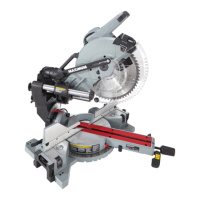
